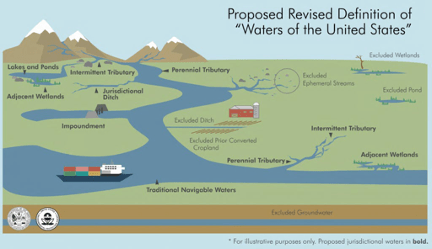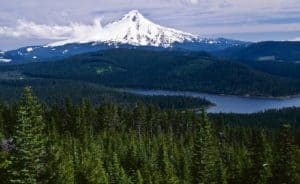
The Trump Administration declared the coronavirus pandemic to be a “national emergency” in March. On June 4, the president issued an executive order on “Accelerating the Nation’s Economic Recovery from the COVID-19 Emergency by Expediting Infrastructure Investments and Other Activities.” It has been characterized as “waiving environmental protections,” in particular the National Environmental Policy Act and the Endangered Species Act, and would include actions taken on public lands. This has been condemned in the usual places.
It will be interesting to see how this plays out on federal lands, and whether it makes any difference. Trump already has the pedal to the metal on development activities, so I wonder what more they could do – without actually violating a law. Maybe we should expect more lawsuits.
Here’s some of the key language in the EO (with my emphasis):
Sec. 2. Policy. Agencies, including executive departments, should take all appropriate steps to use their lawful emergency authorities and other authorities to respond to the national emergency and to facilitate the Nation’s economic recovery. (I assume that means other non-emergency authorities, and not other unlawful authorities 🙂 )
Sec. 5. Expediting the Delivery of Infrastructure and Other Projects on Federal Lands
b) To facilitate the Nation’s economic recovery, the Secretary of Defense, the Secretary of the Interior, and the Secretary of Agriculture shall use all relevant emergency and other authorities to expedite work on, and completion of, all authorized and appropriated infrastructure, energy, environmental, and natural resources projects on Federal lands that are within the authority of each of the Secretaries to perform or to advance.
Sec. 6. National Environmental Policy Act (NEPA) Emergency Regulations and Emergency Procedures.
b) To facilitate the Nation’s economic recovery, the heads of all agencies are directed to use, to the fullest extent possible and consistent with applicable law, emergency procedures, statutory exemptions, categorical exclusions, analyses that have already been completed, and concise and focused analyses, consistent with NEPA, CEQ’s NEPA regulations, and agencies’ NEPA procedures.
Sec. 7. Endangered Species Act (ESA) Emergency Consultation Regulations.
(b) The heads of all agencies are directed to use, to the fullest extent possible and consistent with applicable law, the ESA regulation on consultations in emergencies, to facilitate the Nation’s economic recovery.
Sec. 10. General Provisions
(b) This order shall be implemented consistent with applicable law and subject to the availability of appropriations.
Of course an executive order can’t change the law or regulations, and this one explicitly refers to existing procedures that can be used in emergencies. All I see Trump doing here is pointing out that there are existing authorities to expedite projects, and agencies should be using them. But maybe the intent might be to expand the situations that are considered emergencies to include an economic recession. I doubt that could be done “consistent with applicable law” related to emergency determinations. Here is the language applicable to Forest Service NEPA (36 CFR §220.4):
The responsible official may take actions necessary to control the immediate impacts of the emergency and are urgently needed to mitigate harm to life, property, or important natural or cultural resources.
If there is a need to mitigate immediate harm to life, property or important resources, it would be consistent with applicable law to use the established emergency procedures. There is either nothing new in the executive order, or if there is, we should expect it to be challenged. (And then there is the question of why he waited three months to address this “emergency.”)
But these are dark days. The Washington Post quoted an attorney at a large national law firm (Perkins Coie) that doesn’t usually represent environmental plaintiffs. He noted that the National Environmental Policy Act was enacted 50 years ago partly to prevent arbitrary federal decisions such as building highways through parks and communities of color and that the current administration cannot simply set aside laws aimed at protecting vulnerable Americans or the environment. “I will not be surprised to see many observers comparing this move — declaring an emergency to shield agency decisions from the public — to the order to clear Lafayette Square on Monday evening,” Jensen said, referring to actions in a Washington park this week. “It’s just one more face of authoritarian ideology, with a clear link to issues of race and equality and government accountability.”



